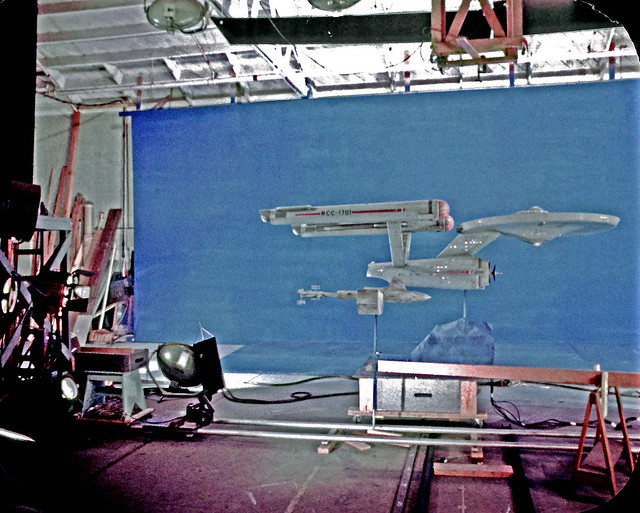
Reviewing this previous "color corrected" frame reminded me to bring up a caveat. Notice the "grain" in SEN's face? That is not film grain. Rather, it is by-product of color correction in the digital world. For example, consider the Star Trek book Star Trek The Original Series 365:


It started out as a Star Trek fan effort to collect and archive "lost" 35mm Star Trek film clips, with an eye to possible publication (their updated website StarTrekHistory.com removed most of the original altruistic sharing of their archive when they went commercial). Interestingly, many of the faded 35mm film clips, now "restored", had an odd "signature" grain ... the same grain that appears in SEN's restored frame here. Same "grain", same "problem".
Film fade narrows the brightness range of the 3 color layers, to different degrees, with this recognized result:

In RGB, red takes the most hit. When RGB separated, this effect from the original faded frame can be seen in a very flat-looking red channel:


The aim of color correction is to spread that range back out to cover it's original spectrum:


But "new exaggerated grain" is generated from the "quick & dirty" digital process and is even visible in the representative graphs -- the smooth original curve to the stepped corrected one. Those steps must be smoothed.
Normally, smoothing would be applied to the complete frame, but that reduces legitimate detail, too, throughout the entire picture. However, while in RGB separations, the red (most correction) and the green and the blue (least corrections) can be smoothed individually, judiciously, and only as strong as needed in each case -- keeping as much real detail as possible. So, I applied a fairly strong "edge-preserving smooth" to red, a very weak one to green, a slightly stronger one to blue, and recombined the RGB separations to:

which now compares well to the non-corrected videotaped broadcast:

Keep in mind this demonstration was made in a paint program and does not exactly mimic video processing ... for better or for worse. :)